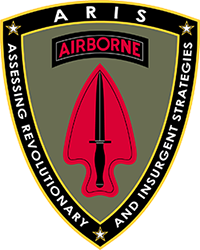

A Pocket Guide

The Assessing Revolutionary and Insurgent Strategies (ARIS) series consists of a set of case studies and research volumes conducted for the US Army Special Operations Command by the National Security Analysis Department of the Johns Hopkins University Applied Physics Laboratory. The purpose of the ARIS series is to produce a collection of academically rigorous yet operationally relevant research materials to develop and illustrate a common understanding of insurgency and revolution. This research, intended to form a bedrock body of knowledge for members of the Special Forces, will allow users to distill vast amounts of material from a wide array of campaigns and extract relevant lessons, thereby enabling the development of future doctrine, professional education, and training.
Research and Writing Guide
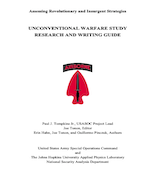
The purpose of this writing guide is to assist individuals tasked with writing case studies that examine unconventional warfare (UW). It is a companion to the Insurgency Study Research and Writing Guide, and both were developed by the National Security Analysis Department (NSAD) of the Johns Hopkins University Applied Physics Laboratory (JHU/APL) under the direction of the US Army Special Operations Command (USASOC), G-3X Special Programs Division. Over the past several years, JHU/APL has written several Tier I Insurgency Case Studies...
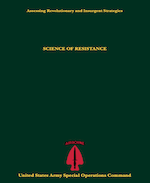
The post-Cold War world has challenged the paradigm of Western great powers that have dominated world affairs since the Peace of West- phalia in 1648, which granted permanent and special status to sover- eign states. Resistance movements targeting established governmental authority have existed since antiquity, but the prominence of internal conflict in world affairs has grown in the twenty-first century as civil wars have replaced interstate wars in frequency. Conventional warfare, though still relevant, demonstrated its limits in Vietnam, Iraq, and Afghanistan, and the prevalence of insurgencies, coups, popular upris- ings, and revolutions clearly demonstrates that future threats are likely to include a complex brew of irregular conflict centered on resistance movements. Preparing to meet such a challenge requires a disciplined approach to understanding resistance movements.
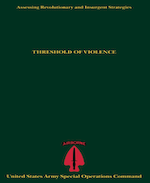
Various authors have noted that violence is often a double-edged sword within combat settings, particularly those involving a resistance movement fighting an asymmetric conflict against the security forces of a stronger incumbent government, with both sides vying for the sympathies of a local population. Atkinson and Kress noted that “on the one hand violence is needed to fight the other side and perhaps deter individuals in the population from supporting the other side, but on the other hand it can turn the population against the source of that violence.”
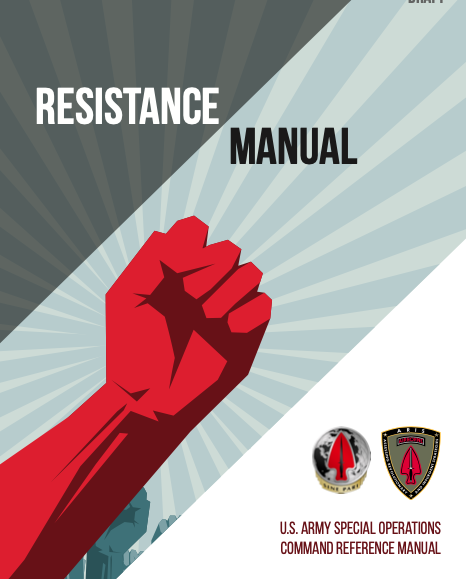
This manual is for the US Army Special Operations Forces (ARSOF) soldier. Whether attending his/her first course at the John F. Kennedy Special Warfare Center and School (SWCS) or already deployed, the ARSOF soldier must be a student-practitioner of his/her craft: providing support to or countering a resistance movement.
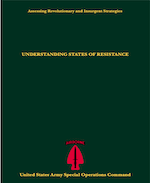
The Assessing Revolutionary and Insurgent Strategies (ARIS) series con- sists of a set of case studies and research conducted for the US Army Special Operations Command by the National Security Analysis Department of the Johns Hopkins University Applied Physics Laboratory. The purpose of the ARIS series is to produce a collection of academically rigorous yet operationally relevant research materials to develop and illus- trate a common understanding of insurgency and revolution. This research, intended to form a bedrock body of knowledge for members of the Special Forces, will allow users to distill vast amounts of material from a wide array of campaigns and extract relevant lessons, thereby enabling the development of future doctrine, professional education, and training.
The Patriot Insurgency (1763-1789)
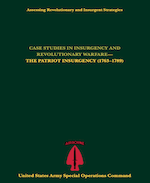
This case study examines the Patriot insurgency that developed among the English colonies in North America in the mid-eighteenth century and that eventually declared, fought for, and achieved independence from the mother country. There is a wealth of historical studies of the American Revolution, but this case study offers a unique perspective. Instead of simply repeating the well-documented history of the Revolution, we scrutinize the Patriots through the lens of modern insurgency doctrine and concepts.
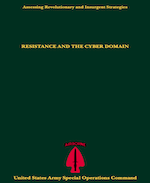
Important weapons of the next major war will be the acquisition, denial, and employment of information. The explosive growth of the cyber domain, with its abilities to vector large quantities of information to billions of Internet users worldwide at trivial cost, exacerbated the importance of information operations across the spectrum of commu- nications and conflict. In a world that witnesses the rise of insurgencies across the globe, the Internet is a weapon used not only by hackers seeking to empty the bank accounts of unwitting victims but also by governments dedicated to the defeat, or overthrow, of their enemies. This work explores the methods, successes, and failures of some recent resistance movements, as well as the efforts of their adversaries.
The Palestinian Arab Insurgency (1890-2010)
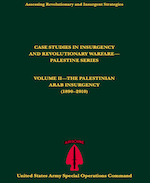
The long-lived Arab–Israeli struggle continues to command the attention of the world. At the root of the issue is the simple but incon- trovertible fact that two groups of people want the same piece of land. The conflict has, since 1947, occasionally boiled over into full-scale war. However, between those episodes, it continued to manifest as a multi- faceted Arab insurgency against Israel.
The Rhodesian Insurgency and the Role of External Support 1961-1979
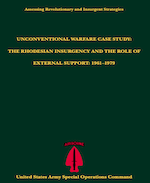
The political and military contest black nationalists in Rhodesia waged against the white minority governments of Winston Fields (1962–1964) and Ian Smith (1964–1979) provides an interesting case study through which to examine the dynamics of an insurgency that had the training, support, and advisory assistance of external sponsors. The Rhodesian conflict is a unique case because the two external sponsors, the Soviet Union and China, provided support to two competing insurgent groups, the Zimbabwe African People’s Union (ZAPU) and the Zimbabwe African National Union (ZANU), respectively. This dichotomy allows for the comparison and contrast of two approaches to unconventional warfare and the corresponding strategies and tactics implemented by the recipients of that support.
Fostering Effective Counter-UW/Occupation
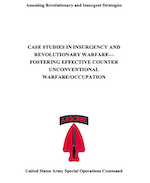
The objective of this study is to explore how to effectively prepare for and oppose unconventional warfare (UW) and/or military occupation in order to inform strategy formulation within vulnerable countries. The focus is on actual and potential aggression by the Russian Federation in Europe, and especially in Eastern Europe. The study looks at what measures a country can take to identify and resist both military and nonmilitary aggression. The latter can take many forms—from televised propaganda to coercive economic policies to the use of organized crime to the funding of political parties. With regard to military occupation, the study examines what actions a potential target state could take in the areas of logistics, communications, command, organization, intelligence, sabotage, subversion, and guerrilla operations so that if an aggressor invades and occupies the country, the population can begin to resist immediately.
How the Behavior of the State and the Resistance Shapes Post-Overthrow Outcomes
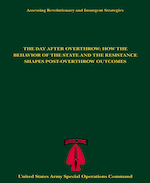
This study seeks to understand the nature of post-transition governance. In particular, we seek to explain why some post-transition governments are engulfed by recurring civil wars while other post-transition governments respect human rights, are stable, and are staunch allies of the United States. This data is important to a United States Army Special Operations Force (ARSOF) soldier because that operator must understand how different factors have interacted historically to produce different types of post-transition governments.
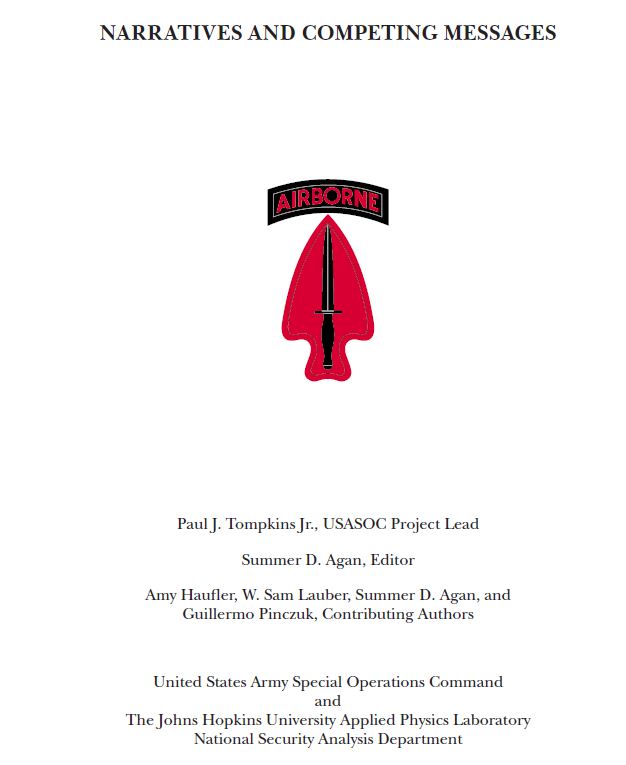
This study reviews operationally relevant research on narratives, surveying a wide breadth of disciplines and industries. Additionally, the study analyzes the functions of a narrative from the initial, incipient phases of an insurgency through the later militarization and consolidation phases. A wide variety of vignettes are used to illustrate how resistance movements evolve their narratives to accommodate organizational growth or decline decline and to fit within the life cycle of the conflict. The analysis also addresses the impact of technologies used to transmit narratives.
A Primer on Modern Russian Unconventional Warfare, Ukraine 2013-14
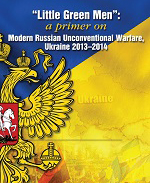
This document is a brief, informative treatment concerning the ongoing conflict in Ukraine. The authors drew from numerous classified and unclassified sources, including key US Department of State diplomatic cables, reports from the US intelligence community, and open-source articles, journals, and books. Because the primer examines a very recent conflict, it does not reflect a comprehensive historiography, no does it achieve in-depth analysis. Instead, it is intended to acquaint the reader with the essential background to and course of the Russian intervention in Ukraine from the onset of the crisis in late 2013 through the end of 2014.
The Relationship Between Iran and Lebanese Hizbollah
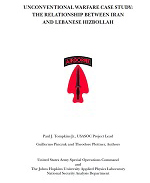
This case study, focusing on Iran’s support of Hizbollah, will serve as a foundation to begin to understand how external nations or organizations support the efforts of insurgent movements (for example, in establishing and maintaining undergrounds, influencing relevant populations, etc.). The study will explore the means and methods of the support and the effects and outcomes that result from the external support.
Understanding Resistance
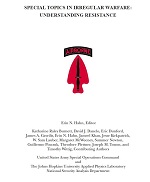
This collection of studies will help the reader begin to understand a variety of topics related to revolution, resistance, and insurgency, as well as other topics germane to the mission of Special Operations Forces. The collection includes primers, exploratory papers, and longer analytical papers on topics such as phases of an insurgency; threshold of violence; the public component of an insurgency; transition from resistance to government; and how a resistance cultivates legitimacy.
Sri Lanka 1976-2009
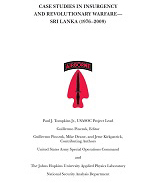
A companion to the study on Colombia, this case study presents a detailed account of revolutionary and insurgent activities in Sri Lanka from 1976 until 2009, with in-depth treatment of the two major insurgent groups operating during that time: the LTTE (Liberation Tigers of Tamil Eelam) and the JVP (People’s Liberation Front).
Palestine Vol. I- The Zionist Insurgency 1890-1950
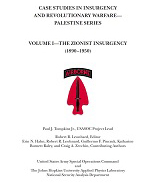
This study examines the Jewish insurgencies and irregular warfare in Palestine from 1890 through 2010. This first volume examines the Zionist insurgency as it evolved from the late nineteenth century through its culmination in the establishment of the State of Israel and the Zionist's transition to governance.
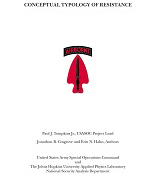
Resistance is defined in this work as a form of contention or asymmetric conflict involving participant's limited or collective mobilization of subversive and/or disruptive efforts against an authority or structure. To better understand the fundamental attributes of this phenomenon, the ARIS team developed this conceptual typology of resistance. This effort seeks to both organize the interrelated concepts essential to resistance in a formalized kind hierarchy and identify how these concepts are related to each other.
Vol. I- 1933-1962
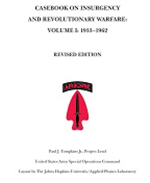
The SORO Casebook was both an introductory piece for students of insurgency and unconventional warfare as well as an initial piece of background research for subsequent SORO studies. It contains summaries of twenty-three revolutions and insurgencies that occurred across the world during the mid-twentieth century (1927–1962) and was written to extend the Army’s knowledge of how revolutions are born, grow, and succeed or fail. This original volume primarily focuses on the Communist threat. Because the subsequent fundamentalist Islamic threat is significantly different from its Communist and Maoist predecessors, the second volume, summarizing twenty-three insurgencies and revolutions that have occurred since 1962, was written by the ARIS team to complement this original volume.
Vol. II- 1962-2009
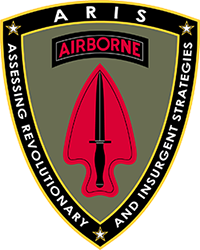
This casebook provides summaries of twenty-three insurgencies and revolutions that have occurred since 1962, with the goal of introducing the reader to modern-style irregular and unconventional warfare. Although its intent is not to provide in-depth analyses, the book provides sufficient background material and descriptions of the revolutions to allow comparisons and insights across a broad spectrum of cases.
Annotated Bibliography

This annotated bibliography is arranged according to the core tasks associated with irregular warfare: foreign internal defense, counter-terrorism, unconventional warfare, and counterinsurgency. The bibliography provides readers a traditional military perspective as well as perspectives from political scientists, sociologists, psychologists, and anthropologists studying similar phenomena.

A complement to the second edition of Undergrounds in Insurgent, Revolutionary, and Resistance Warfare, this book studies the human domain as related to insurgent, revolutionary, and resistance warfare, exploring questions such as why individuals choose to join and remain in underground movements. The first edition of the book, published by SORO, was an important synthesis of a poorly understood topic and has proved to have remarkable staying power. However, in recognition of the tremendous changes in the world since the 1960s, this second edition draws on more recent work in psychology, political science, economics, sociology, organizational studies, and communications studies.
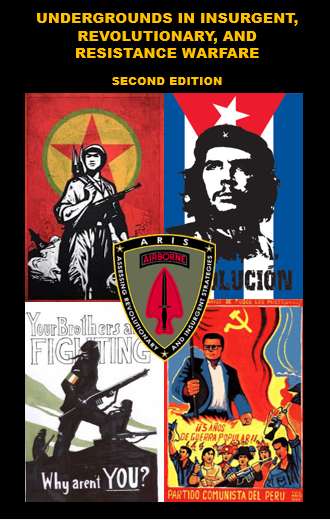
Since the original SORO publication in 1963, much has changed and much remains relevant. However, the original study's observation—that for every guerilla fighter, there are from two to twenty-seven underground members—is still true. Likewise, the study’s main thesis—that the underground part of an insurgency is the sine qua non of all such movements—is demonstrably accurate today. This updated edition educates the student and practitioner of insurgency and counterinsurgency, drawing on insights from the post-Cold War world to examine the anatomy of undergrounds in various insurgencies of recent history.

This study on the Guatemalan situation between 1944 and 1954 emphasizes the role of the indigenous military during the rise of Communist influence, rather than revolutionary organization and techniques. Like its companion studies, this work analytically portrays the background, essential causes, persons, parties, movements, actions, and consequences related to the Communist influence in Guatemala to aid in developing a more general understanding of revolutionary processes.

This study of Greece during World War II presents a comprehensive review of the major aspects of a guerilla campaign, including the inherent problems and possible solutions, the many aspects of tactical operations, and the complex working relationships among individuals and groups with diverse backgrounds and goals. The study also provides insight into possible reasons for tactical success in anti-guerilla combat but simultaneous failure to eradicate a guerilla movement. Particularly concerned with problems in both the exploitation and the countering of guerilla warfare, the study also carefully examines the technique used by the British to manage, support, and control the guerilla movement.

This study presents the history of the Cuban revolution and analyzes its causes and the responses to it. The foreword cites the following reasons for conducting the study: (1) the close relation of Cuban interests and those of the West; (2) the profound effect of action or the lack of action by powers outside Cuba; (3) concern that the Cuban Revolution become a prototype for Communist revolutions elsewhere; and (4) because the final form of the Cuban Revolution was so different from its initial manifestations. This final point is relevant even today. While the Cuban Revolution appeared originally to be a political protest movement with moderate aims, it grew into a major upheaval that changed the foundations of Cuban life.

A companion to the other SORO case studies, this work presents and analyzes the Algerian Revolution’s essential causes, actors, actions, and consequences to make possible the systematic comparison of one revolution with another. Its aim is to facilitate development of understanding of revolutionary processes. The two major factors that contributed to the Algerian revolution—the economic plight of the masses and the political frustration of the intellectual elite—are present still in modern-day revolutions.
Colombia 1964-2009

This case study presents a detailed account of revolutionary and insurgent activities in Colombia from 1964 until 2009, with in-depth treatment of four major insurgent groups: the FARC (Revolutionary Armed Forces of Colombia), the ELN (United Self-Defense Forces of Colombia), the AUC (United Self-Defense Forces of Colombia), and M-19 (19th of April Movement). It provides a foundation to understand the circumstances, environment, and catalysts for revolution; the insurgent and counter-insurgent group's development, organization, modes of operation, external support, and outcomes; and the short- and long-term ramifications of the revolutionary/insurgent activities.

This study synthesizes the prevailing issues and analysis concerning the legal status of persons involved in resistance— including individuals comprising the resistance element, US personnel supporting or countering the resistance, and the standing government— particularly in foreign internal defense, counterinsurgency, and unconventional warfare operations.
v1.0- 2016

This guide is a quick reference of Unconventional Warfare (UW) theory, principles, and tactics, techniques and procedures. It is not a complete treatment of the subject. To guide further study, it includes (in annotated form) as many references as possible starting with established law, policy and doctrine, includes scientific studies, and finishes with recommended reading on the subject.
*This is an official U.S. Army website*